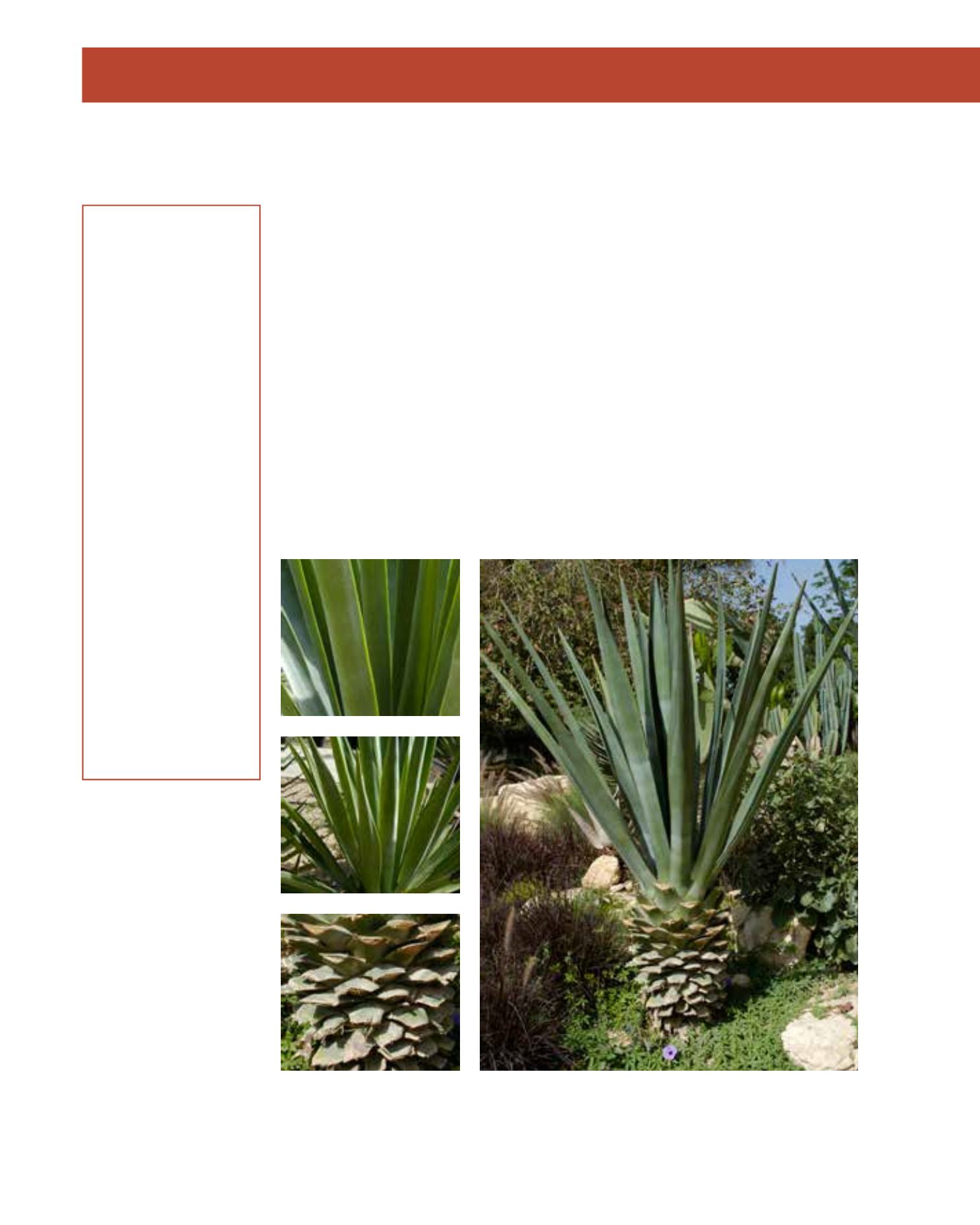

GENERAL
Origin
:
Mediterranean,
sub-tropical
Vigour
:
fairly fast
growing
Humidity
:
very arid, semi-
arid
Propagation :
direct sowing,
division
Maintenance :
low
CONDITIONS
Urban climate :
resistant
Dessication :
resistant
Stagnant water :
vulnerable
Irrigation
:
low
Salinity/ppm :
moderate (2000
ppm)
Hardiness
:
-3°C
SHAPE
Type
:
cacti, succulents
Height
:
1.2 m-1.8 m
Spread
:
2 m-3.5 m
Foliage
:
evergreen
FLOWER
Colour
:
light green,
secondary: light
yellow
Size
:
500 cm
Period
:
June - September
Smell
:
scented,
moderate, flower
FRUIT
Type of fruit :
capsule
Fruit size
:
4 cm - 5 cm
In its shape, this Agave resembles A. americana, although the leaf edges do not have sharp spines
and the narrower foliage is not bent downwards. However, the tip is just as dangerous to anyone
nearby. The Agave does grow faster and develops a short, thick trunk. Flowers are creamy-white.
The genus’ name derives from the Greek agavos, which means ‘admirable’. Easily grown in all arid
regions, and as with many other desert plants, Agaves do not like fertilisers and prefer soils with
low organic content. Waterlogging in pots or rock may kill Agaves. Healthy specimens are usually
pest-free, but mealybugs or scale can easily be washed off the huge leaves. The flowering stem
is stunning, but results in a dead foliage clump that needs to be disposed of carefully. However,
offshoots make new plants easily. Plants do not flower before the age of 10, but may take up to 30
years before doing so and then dying. This species produces tough fibres that are used for matting,
twine, sandals or brushes. Sisal for rope is probably the best known product. Additionally, Native
Americans made medical use of Agaves. Other Agave species suitable for planting in Arriyadh,
or occasionally seen there, are Agave colorata, Agave palmeri, Agave parryi and Agave weberii.
43
Agave sisalana,
Agavaceae
Smooth-Edged Agave
















